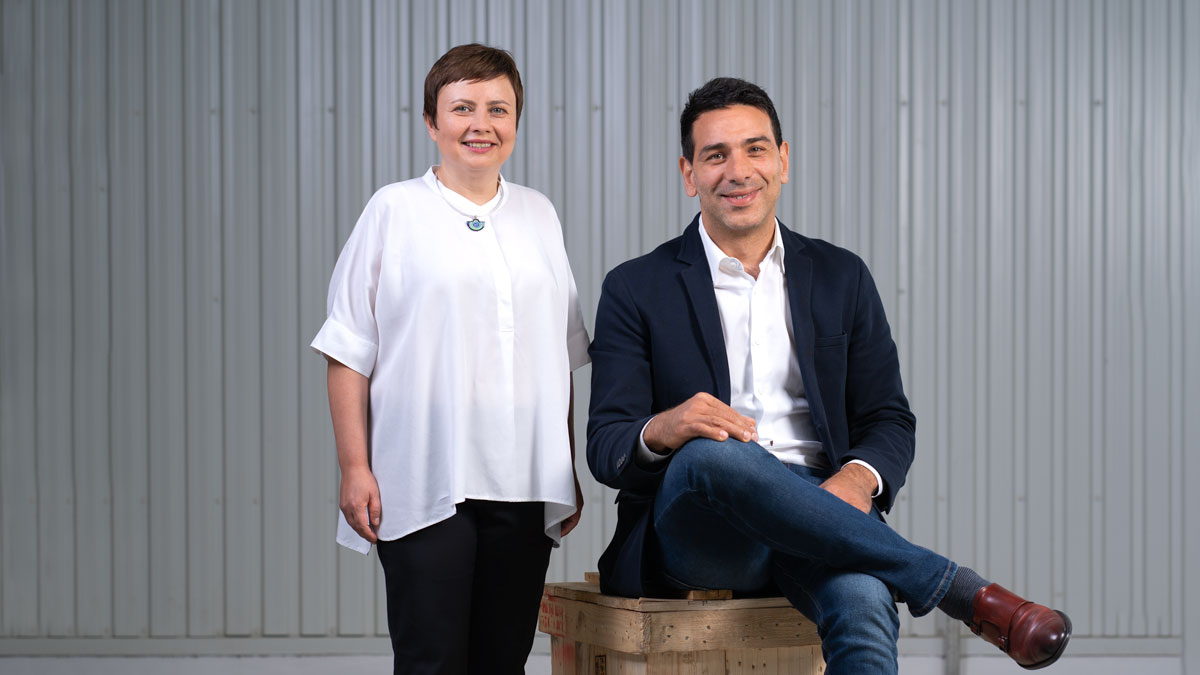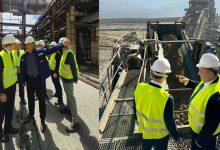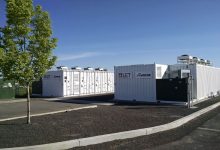AUTOMATICA’s Evolution Over Time: Supporting Strategic Industrial Objectives in Romania
AUTOMATICA is a company with tradition, continuously developing and modernizing, with two main product lines: power – including low and medium voltage electrical equipment for the production, transportation, distribution, and consumption of electrical energy and industrial automations with robotics, weighing and batching solutions. With a history stretching back more than 60 years, the company takes pride in providing products for a large majority of strategic industrial objectives developed in Romania over the years. Since 2018, AUTOMATICA SA is part of CEMS Group.
CEMS Group President – Ali Taher and AUTOMATICA’s President and Chief Executive Officer – Corina Truică assess business operations to add growth and profit to the company.
Automation pioneer in Romania
Dear Mrs. Truică, AUTOMATICA has been present on the market since 1960. How can you stay informed and find your company’s place in the global energy industry? What are your achievements for 2021?
Well, a very good source of information is Energy Industry Review. And there are other publications, Romanian or international, with economic profile or rather technical. Nowadays, it is more difficult to filter the huge amount of information and select what is relevant. I have also around me many people having great ideas, debating and analysing trends or circumstances.
Staying informed is equally a matter of perspective and a company with over 60 years of operations can provide an image over evolution of technology, which concepts or technologies are truly innovative and have the potential to generate a real change. I have the chance to work with a team of excellent engineers, different generations, but with a shared passion for innovation. Last but not least, with two shareholders that are one an economist and one an engineer, we have a perspective over both technical and economic realities.
Our industry is a global one today. We have clients on all the continents, from energy sector, infrastructure, or manufacturing industries and, in many cases, our best ambassador is the equipment still operational in good parameters after 20, 30 or even 40 years. There are some priorities that can be identified when designing each product. Reliability and safety are two of them.
In terms of achievements, this year means a huge step forward. The new factory located in Otopeni is offering the right infrastructure to produce complex applications, but also for our R&D projects. The production area is over 7000 sqm and the high-performance machines are covering the necessary operations for most sophisticated mechanisms inside our products up to heavier turnkey solutions, like mobile power stations in containers.
Another important achievement is resuming two traditional product lines abandoned after 1989: electronics and robotics. As an example, this year the arc detection relay has completed R&D and testing phase and now is in the commercial phase. This is an important safety component in a switchgear and AUTOMATICA’s solution is one of the most performant, but also competitive in terms of price.
Definitely, the evolution in 2021 shows that after more than 60 years, Automatica is an experienced organisation, but with a constant appetite for new technologies and internal mechanisms for adapting to change.
Dear Mr. Taher, using the full potential of digital technology to intensify innovation and to improve the efficiency of innovation processes requires a deep understanding of the role of ICT sector in production and market processes. What does digital transformation mean for your company?
I will focus on two areas of our activity where ICT has significant impact. One is related to engineering and production processes. Today, there are advanced solutions for simulations and prototyping is almost every time successful at first trial, the software embedded in the machines and the flow from engineering to machines are more advanced every year. This involves changes in management systems, training, but also an increase in productivity. The pandemic forced companies to deploy ICT solutions faster than ever before expected. Given the travelling restrictions, we have implemented the necessary systems to perform factory acceptance tests online.
The fast evolution of ICT tools available has transformed management of change from once in a while process into an everyday practice.
Second area is about the way we design our products. In an engineering team, there is at least one software engineer programming the various automation and protection functions. Each equipment is designed to be integrated in a SCADA system or prepared to be upgraded for future features. From factory level up to national system and interconnected regional systems, ICT has a significant impact on reliability, safety, and simplicity of operation.
Yet, we all know that the ICT expansion involves major cyberthreats. Therefore, cybersecurity is a constant preoccupation in both areas mentioned above.
You have recently launched the new line of welding robots with ABB. What are AUTOMATICA’s priorities in configuring products and services?
The people passionate by history of Romanian industry probably know that AUTOMATICA used to be a producer of robots for various applications and with very good performances for that time. Electronic applications for automations used to be an area of production, as well. The objective is to further develop these product lines, combining latest technologies and the expertise accumulated over the years.
The welding robots are only the starting point. Romanian market for robotics solutions is in its early stages. The statistics show that Romania is far behind most EU countries in terms of using robotics in the production processes, except for automotive industry. The gap is going to be recuperated naturally as a result of increase in salaries and lack of available human resources.
On the other hand, the supply chains for robotics solutions have expanded exponentially and an integrator has the tools to automate many of the manual processes in industry. We are prepared to develop customized solutions for various industries, including welding applications.
The electronics production is based on AUTOMATICA R&D. The range of products will increase in the future years as research projects will reach commercial phase.
Regarding the Power product line, most of AUTOMATICA switchgears have been redesigned during the past two years and new equipment added, such as the MV soft starter which is a very reliable and cost-effective solution for installations like irrigation pumping stations.
Another solution for expanding the product range is licencing. AUTOMATICA is licensed by SIEMENS AG to manufacture SIVACON S8 low-voltage switchboard for industrial applications or infrastructure applications, including marine and offshore use. This has been a long and successful cooperation. Starting 2021, AUTOMATICA is producing PIX air insulated switchgear up to 2500 A; 31,5 kA; 24 kV licensed by SCHNEIDER ELECTRIC.
The most complex form of cooperation are partnerships for complex solutions which start in R&D stage and continue to production and integration phases.
I would like to underline the fact that, for each product line, AUTOMATICA is supplying highly customised solutions at high quality standards. Many of our clients operate in industries where reliability and safety are key expectations, such as oil & gas, petrochemical industry or nuclear.
ROMATOM estimates that the potential participation of Romania’s nuclear industry to the completion of Cernavoda Units 3 and 4 Project is evaluated at around EUR 1-1.6bn, which would account for 25-40% of the total value of the Engineering, Procurement, Construction and Commissioning (EPCC) contract. Will AUTOMATICA contribute to this endeavour?
Corina Truică: ROMATOM had an excellent initiative to show interest in local capabilities to supply for nuclear projects. I hope in future the Government will take this example and expand it to other industries as well. For the first time, security of supply is not related exclusively to energy, but to some key industrial products blocking the global supply chain. From an industrial policy point of view there are other aspects to be considered, such as share of high and medium-high industries, added value, etc.
AUTOMATICA implemented the first Quality Assurance Program in line with the Canadian Standard CSA Z 299.3, being able to supply equipment for the nuclear domain in 1981. Nowadays, the company is CNCAN certified for engineering and manufacturing. Applying the quality standards for nuclear had a general impact on company culture in terms of quality assurance and equipment reliability and safety. AUTOMATICA is interested not only in local projects, but also to participate in the global supply chains for nuclear.
The answer is that we would be honoured to be a supplier for the coming projects in Cernavoda. Of course, there will be tenders, so we can’t estimate now what our contribution will be. For sure we have the experience and the production capacity to be involved in major projects in the nuclear field.
There is a tradition that we hope to continue: AUTOMATICA has been involved in many major projects in Romanian industry and energy, not only nuclear. As a recent example, the MV equipment for the new Iernut power plant is produced by AUTOMATICA and we hope to see soon the project completed. We would like to have a contribution to other future projects, such as Vidraru refurbishment. In the end, we are a Romanian company and producing for great Romanian projects is an honour and a responsibility.
Nowadays, R&D activity is becoming linked with firms’ growth and profitability. What role R&D plays in AUTOMATICA’s business and how do you manage to add growth and profit to the company?
Corina Truică: In my opinion, in our industry it is impossible to perform without investments in research and development. Even mature product lines go through periodic improvements. One subject is related to new technologies available. As an integrator industry we must know the latest solutions and make use of them to build the best possible product. Another trigger for change is information collected from people using our equipment. We have succeeded to build a major advantage of our products: easy operation and maintenance.
In some cases, the R&D projects start from zero, from an idea, a feature we need or a client’s requirement.
In terms of business philosophy, we don’t set profit as the main goal. Of course, financial health of a company is important and should be maintained, but the true achievements are somewhere else. It’s hard to measure with KPIs the satisfaction of the engineering team when a new product is ready for market after months or research, when a factory acceptance test is completed successfully or when, in a major power plant or refinery, we see the label AUTOMATICA and the people operating the systems give good feedback.







